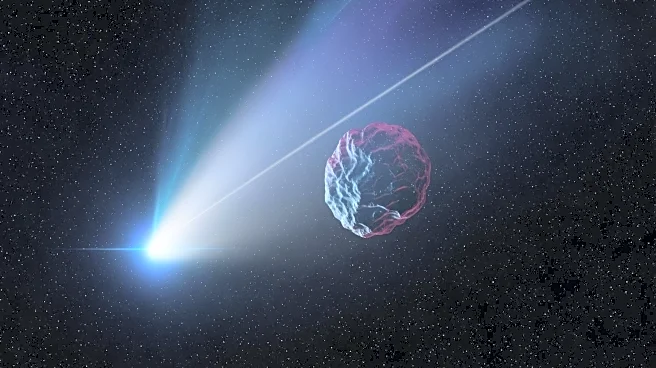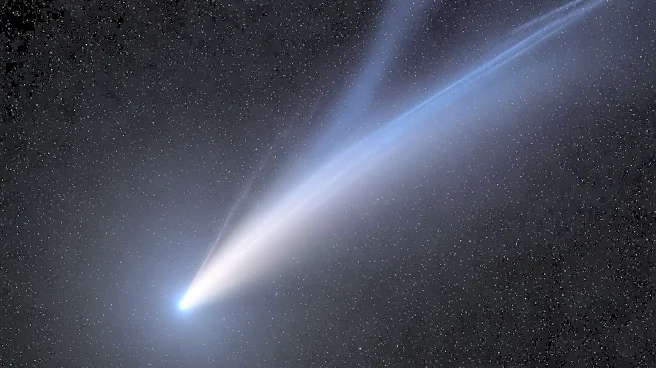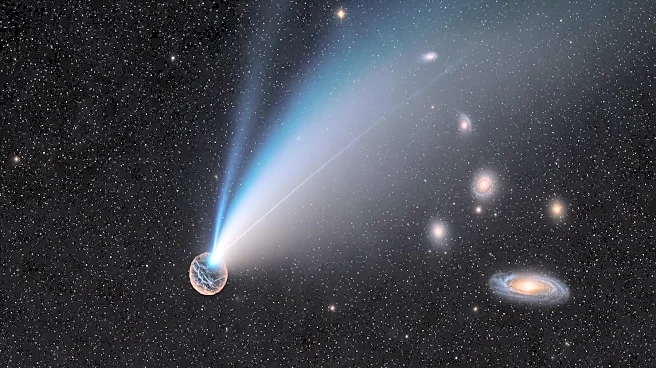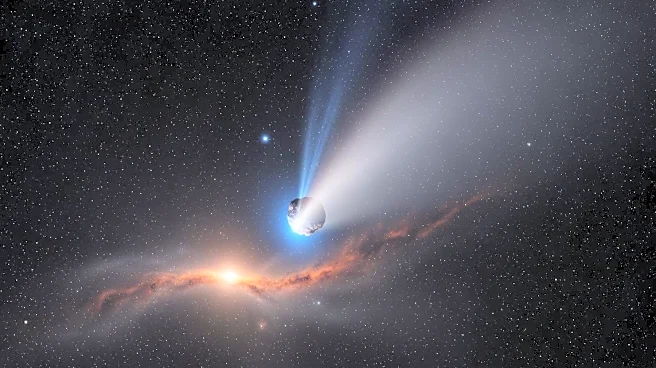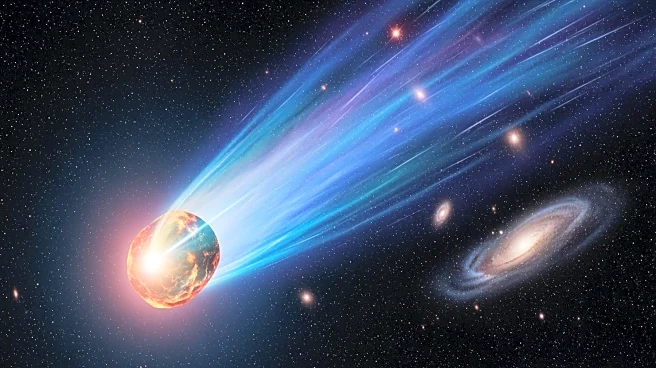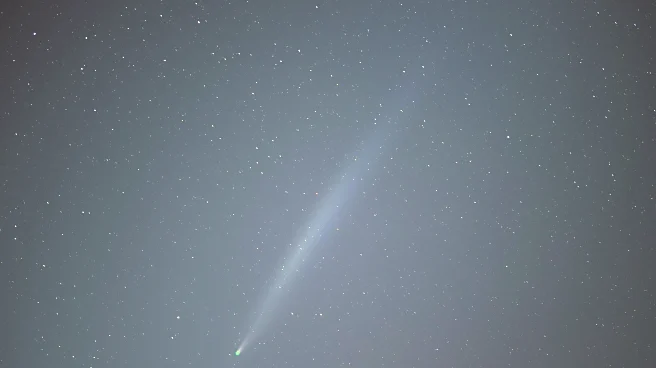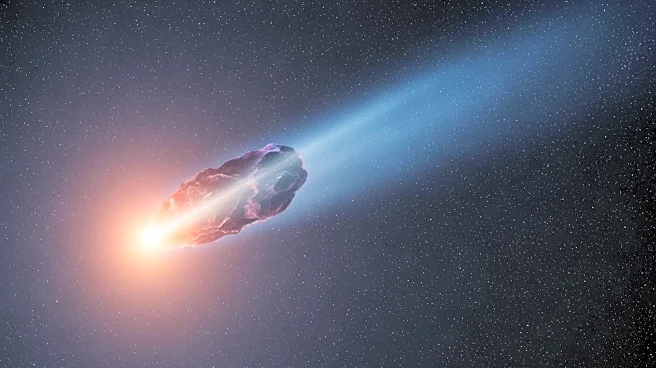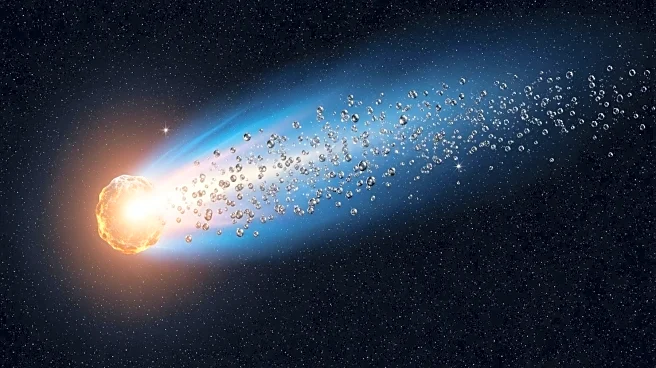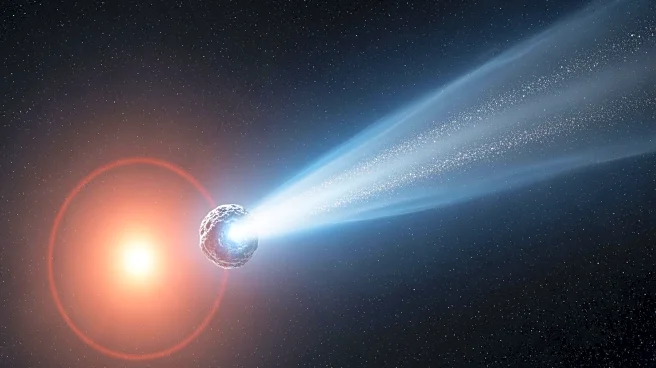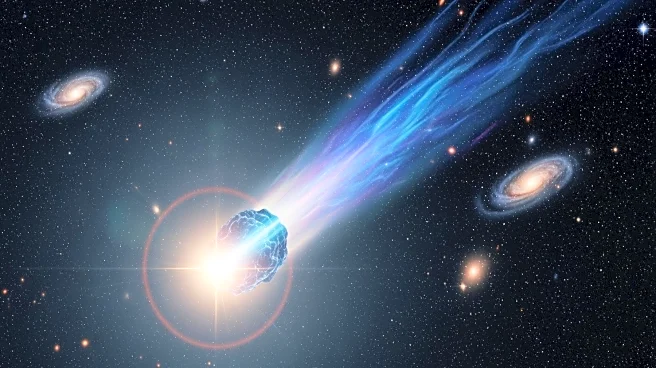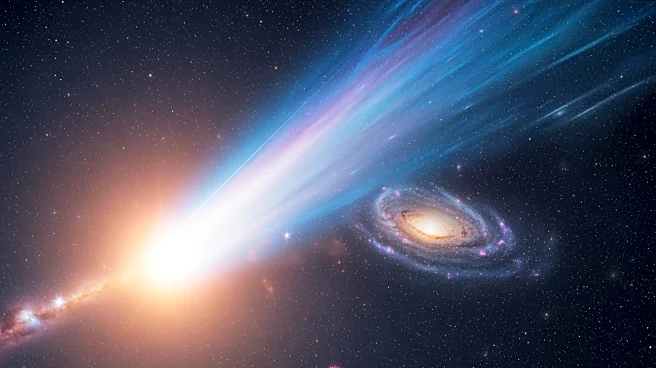What's Happening?
Interstellar comet 3I/ATLAS has exhibited a rapid increase in brightness as it neared its closest approach to the Sun on October 29, 2025. Observations from various spacecraft, including STEREO-A, SOHO,
and GOES-19, have documented this phenomenon. The comet's behavior at perihelion is being closely monitored to assess whether it shows signs of being an extraterrestrial spacecraft, as speculated by Harvard professor Avi Loeb. The comet's brightness and its distinctly blue color compared to the Sun have surprised scientists, suggesting that gas emissions may contribute significantly to its visible brightness.
Why It's Important?
The unexpected brightening of comet 3I/ATLAS could have implications for our understanding of interstellar objects and their properties. The comet's behavior challenges existing models of cometary activity and raises questions about its origin and composition. If the comet is indeed more than it appears, it could provide insights into potential extraterrestrial technology and its interaction with solar systems. This discovery is significant for astronomers and astrophysicists, as it may lead to new theories about interstellar travel and the nature of objects entering our solar system.
What's Next?
As 3I/ATLAS continues its journey, scientists will conduct further observations to understand the reasons behind its rapid brightening and unusual color changes. The comet will be observable from Earth at twilight following its perihelion, allowing for detailed ground-based studies. Data from the Hubble and Webb space telescopes will be crucial in characterizing the comet's properties and determining its potential technological origin. Researchers will continue to analyze the comet's trajectory and behavior to uncover more about its nature.
Beyond the Headlines
The comet's unexpected properties, including its blue color and rapid brightening, add to the list of anomalies associated with interstellar objects. These findings could lead to discussions about the possibility of extraterrestrial technology and its implications for our understanding of the universe. The comet's behavior may challenge existing theories about cometary activity and interstellar travel, prompting scientists to reconsider current models and explore new possibilities.
